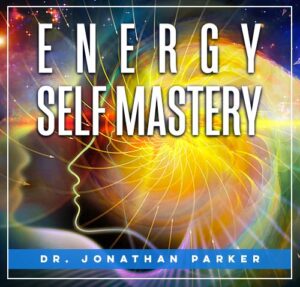How dream journaling helps track energy shifts

Looking for more amazing products? Check out our online store and explore our collection here! Happy shopping!
Before diving in, please note: This post is for informational purposes only. If you’d like to know more about how we approach topics, feel free to check out our friendly Disclaimer Page.
Hey there, amazing readers! 
We’re committed to delivering quality posts, and your support (even just sticking around despite the ads) means everything to us. So, bear with us, and thanks for helping us keep the good vibes rolling. Now, on to the fun stuff!
TRANSLATE BUTTON AT THE END OF THE ARTICLE
A Quick Overview
Dream journaling is like holding a mirror to our subconscious, reflecting the energy we experience in our lives.
By recording our dreams, we create a tangible connection to our inner world, helping us to understand how our energy shifts throughout the day.
Whether we acknowledge it or not, our dreams often reveal insights about our emotional state, mental clarity, and even our physical well-being.
This article explores how dream journaling can help track these energy changes, offering practical advice and personal anecdotes along the way.
Discovering the Benefits of Dream Journaling Today
When I first started dream journaling, I had no idea how much it would change my life.
It’s not just a fun hobby; it’s a powerful tool for self-discovery.
Dream journaling can help us:
Enhance Self-Awareness: Writing down our dreams allows us to recognize what’s happening in our lives, emotionally and mentally.
Awareness is the first step toward change.
Track Mood Changes: Dreams often reflect our feelings.
By documenting them, we can see patterns related to our emotional states over time.
Improve Sleep Quality: The routine of writing before bed can set a calming tone, making it easier to drift off peacefully.
Stimulate Creativity: Dreams can be a wellspring of inspiration.
Many artists and writers have derived ideas from their nighttime visions.
Identify Stressors: Sometimes, our dreams reveal what stresses us out.
By pinpointing these issues, we can address them in our waking lives.
Encourage Problem Solving: Ever woken up with a solution to a problem you thought about the day before?
Dream journaling can help tap into that subconscious problem-solving power.
Track Personal Growth: As we evolve, our dreams shift too.
Noticing these changes can help us realize how far we’ve come.
Connect with Inner Wisdom: Dreams can offer unique perspectives on various situations.
Listening to our inner voice can guide us.
Master your Energy and Awaken Your Spirit – start your journey here.

Encourage Healing: Many people find healing in their dreams.
Processing emotions through their dreamscapes can foster emotional recovery.
Create a Legacy: Years down the line, reading through old dreams can provide fascinating insights into who we were at that time.
How Dreams Reflect Our Daily Energy Patterns
I often find that my dreams are a reflection of the energy I felt during the day.
Have you noticed this too?
Dreams can reveal fluctuations in energy levels.
For instance, if I’ve had a particularly stressful day, my dreams might be filled with chaos and confusion.
On the flip side, a calm day often leads to tranquil dreams.
High Energy: If I’m buzzing with excitement, my dreams might be vivid and fast-paced.
They can mirror my enthusiasm, showing colorful landscapes and dynamic scenarios.
Low Energy: Conversely, if I’m feeling drained, my dreams may be more subdued, perhaps focusing on familiar places and repetitive themes.
Transitional Phases: During times of change, like starting a new job or moving, dreams can become chaotic, reflecting the uncertainty and emotional upheaval.
Emotional Release: Sometimes, I dream about things I didn’t even realize were bothering me.
These can be a release of pent-up feelings, showcasing how my energy might be trapped.
Symbolic Reflections: Dreams often use symbols to convey messages about our energy.
A recurring symbol might indicate a persistent energy drain in my life.
These connections show that dreams serve as a compass for understanding our daily energy shifts.
The Science Behind Dreams and Energy Shifts
There’s a fascinating interplay between our minds and bodies when it comes to dreaming.
Neuroscience digs deeper into how dreams can reflect our energy levels.
Sleep scientists have shown that:
REM Sleep: During REM (Rapid Eye Movement) sleep, our brain is highly active.
This stage is where most dreaming occurs and often reflects our emotional experiences.
Brain Activity: Studies reveal that certain brain areas are activated during dreams, correlating with our daytime emotional responses.
This means our highs and lows are processed while we sleep.
Memory Consolidation: Dreams help process memories.
They can make sense of our daily experiences, consolidating them into memories that affect our emotional energy.
Emotional Regulation: By dreaming, we can process unresolved emotions, helping regulate our mood.
This directly correlates with our overall energy levels.
Physiological Responses: Dreams can trigger physical responses in the body.
For example, a stressful dream may lead to elevated heart rates, mirroring the energy levels we experience while awake.
Scientific research continues to uncover the profound connections between our dreaming selves and our energy fluctuations, proving that what happens at night can deeply affect us during the day.
Keeping a Dream Journal: Your First Step Forward
Starting a dream journal is like beginning an exciting adventure.
It’s a chance to explore your inner self and track your energy shifts.
Here’s what you need to think about:
Choose Your Journal: Find a notebook that feels good to you.
Whether it’s a plain ol’ spiral notebook or a fancy leather-bound journal, it should inspire you to write.
Set an Intent: Before you fall asleep, set an intention.
Master your Energy and Awaken Your Spirit – start your journey here.

Maybe you want to focus on tracking a specific emotion or energy shift.
Keep It by the Bed: Place your journal and a pen on your nightstand.
This makes it easy to jot down your dreams as soon as you wake up.
Be Consistent: Try to write in your journal every day.
Even if you don’t remember your dreams, jot down how you feel upon waking.
Date Your Entries: This helps to spot patterns over time.
You’ll want to see how your energy shifts correlate with specific dreams.
Keep It Private: Your dream journal is for your eyes only, so be free-flowing and honest.
This is your sacred space.
Include Details: Note not just the dream but also how you felt during it.
Was it a nightmare, a delightful adventure, or something in the middle?
Review Regularly: Take time to look back at your entries every few weeks.
This can reveal patterns and insights about your energy.
Be Patient: Don’t expect immediate results.
Like any form of self-discovery, it takes time to see the bigger picture.
Enjoy the Journey: Remember, this is about discovery and fun!
Embrace the process, and don’t stress about the details.
How to Start Writing in Your Dream Journal
Getting started with your dream journal can seem overwhelming, but it doesn’t have to feel like climbing a mountain.
Here are some simple steps to get your creative juices flowing:
Start with Keywords: Upon waking, jot down any keywords or phrases that come to mind.
They can be a great springboard for deeper exploration later.
Use Prompts: If you’re stuck, try using prompts like "What was I feeling?" or "What does this dream mean to me?"
Draw: If you’re artistically inclined, sketching elements from your dream can add a rich layer to your entries.
Record Emotions: Write down how you felt during the dream.
Emotions are key to understanding energy shifts.
Describe the Setting: Details about the environment can reveal a lot about your mental state.
Was it bright and vibrant, or dark and foreboding?
Focus on Characters: If there were people in your dreams, describe them.
Who were they, and what role did they play?
Reflect on Symbols: If certain symbols stand out, jot them down.
They can be insightful markers for energy shifts.
Use a Consistent Format: Keeping a consistent structure can make it easier to follow your entries.
Write Freely: Don’t worry about grammar or spelling.
Let your thoughts flow without self-judgment.
Include Future Intentions: After writing, consider including what you want to focus on in future dreams or the energy you want to manifest.
The Best Time to Journal: Morning vs. Night
Timing can play a significant role in dream journaling.
Have you ever thought about the best time to write?
Morning Writing: Many people find that writing immediately upon waking works best.
This is when dreams are freshest in our minds, allowing for rich details.
Nighttime Reflections: Some prefer to journal at night, setting intentions for their dreams.
This can create a purposeful approach and even lead to more vivid dreams.
Mood Matters: Consider your energy levels.
If you’re more alert in the morning, that’s your cue to pen down your dreams then.
Consistency: Whatever time you choose, consistency is key.
The body loves routines.
Short Sessions: Morning journaling might take less time since we often remember dreams vividly upon waking.
A quick five-minute write-up can work wonders.
Evening Rituals: If journaling at night, try creating a calming ritual beforehand.
This could involve reading, deep breathing, or even a short meditation.
Experiment: Don’t hesitate to try different times.
See what works best for you.
It’s all about finding that sweet spot.
Listen to Your Body: If you feel the urge to write at an unusual time, go with it!
Sometimes, those unexpected moments bring the most clarity.
Be Flexible: Life can get busy, so don’t beat yourself up if you miss a day.
Just pick up where you left off.
Stay Engaged: Make it a fun part of your routine that you look forward to, rather than a chore.
Recognizing Patterns in Your Dreams and Energy
As I flipped through my dream journal, I began to notice trends.
Patterns can be enlightening.
Here’s what to keep in mind:
Recurring Themes: If you notice similar symbols or scenarios, take note.
Are they tied to your waking life’s energy shifts?
Frequency of Emotions: Do certain emotions pop up frequently?
This could relate to ongoing stressors or energy drains in real life.
Dream Characters: If a person keeps appearing, what do they represent?
They might reveal aspects of your energy dynamics.
Timing Trends: Are there specific times in your life when your dreams take on a particular tone?
Recognizing these can help track energy changes.
Energy Peaks and Valleys: Notice when you feel energetic versus when you’re more lethargic.
How do your dreams reflect these states?
Context of Dreams: Are your dreams influenced by upcoming events?
Perhaps a big meeting is making you dream about public speaking.
Interpersonal Relationships: Examine how your dreams about others correlate with your energy.
Are certain relationships draining or uplifting?
Dream Evolution: Over time, my dreams shifted as I processed emotions.
Tracking these shifts can highlight personal growth and energy management.
Journaling for Clarity: Going back and reviewing can spark "aha" moments—those enlightening breakthroughs that help you refocus your energy.
Share and Discuss: Sometimes, sharing your dreams with a friend can provide fresh insights.
Conversations can reveal connections you might have missed.
Analyzing Dream Symbols for Deeper Insights
Dreams often speak a secret language filled with symbols.
These symbols can unlock deeper insights into our energy shifts.
Here’s how to analyze them:
Keep a Symbol Dictionary: Create a list of symbols that frequently appear in your dreams.
Research what they might represent.
Personal Associations: Remember that symbols can have different meanings for different people.
Trust your gut feelings about what they represent for you.
Cultural Context: Some symbols can have universal meanings.
Exploring cultural interpretations can add layers to your analysis.
Emotional Resonance: Consider how a symbol made you feel in the dream.
The emotional response adds depth to its meaning.
Contextual Clues: The context in which a symbol appears matters.
A knife in a dream may signify cutting ties or protection, depending on the situation.
Color Significance: Colors in dreams can convey specific meanings.
For example, red often relates to passion or anger, while blue might point to calmness.
Combining Symbols: Look at how different symbols interact in your dreams.
Their relationships can provide insights into your energy dynamics.
Write Reflections: After analyzing a symbol, jot down your reflections in your journal.
What did you learn, and how can it inform your energy management?
Stay Open: New insights may surface as you continue your analysis over time.
Be willing to reassess symbols as your life evolves.
Consult Resources: There are numerous dream dictionaries and online resources to help decode symbols.
Use them as tools for deeper understanding.
The Connection Between Emotions and Energy Levels
My journey through dream journaling has shown me the undeniable link between emotions and energy.
Here’s why understanding this connection matters:
Emotional Energy: Our emotions carry energy.
Positive emotions can uplift us, while negative emotions may drain us.
Dreams as Mirrors: Dreams often reflect our emotional state.
If I’m feeling anxious, my dreams may portray chaotic scenarios, revealing how my energy is affected.
Cycle of Emotions: Emotions can be cyclical.
If I notice repeated emotional themes in my dreams, it’s time to address them consciously.
Real-Life Triggers: Sometimes, events in our waking lives trigger emotional responses that carry into our dreams.
Recognizing these can help manage our energy.
Healing Through Dreams: Processing emotions in dreams can lead to healing.
This can release trapped energy and restore balance.
Mindfulness Practices: Engaging in mindfulness can help us stay attuned to our emotions, making it easier to understand their impact on our energy.
Use of Affirmations: Incorporating positive affirmations before bed can improve emotional energy, leading to more uplifting dreams.
Energy Cleansing: Just as we physically cleanse our spaces, we can cleanse our emotional energy.
Journaling can be a vital part of this process.
Seeking Joy: Engaging in activities that bring joy can positively shift our emotional state and, in turn, influence our dreams.
Emotional Check-ins: Regularly check in with your emotions throughout the day.
Recognizing shifts can help you process and reflect in your dreams.
Tips for Enhancing Your Dream Recall Skills
Low recall can be a dream journaler’s bane, but worry not!
Here are some tried-and-true tips to enhance dream recall:
Stay Hydrated: Drinking water before bed can help maintain brain function, aiding recall.
Limit Alcohol and Caffeine: These substances may interfere with sleep quality and can affect dream recall.
Establish a Sleep Routine: Consistency in sleep schedules can improve the quality of sleep and, subsequently, dream recall.
Use a Voice Recorder: If writing feels like a chore early in the morning, try recording your thoughts.
It can be a quick way to capture fleeting memories.
Focus on Your Dreams Upon Waking: Spend a few moments reflecting on your dreams before jumping out of bed.
This helps reinforce memories.
Engage with Dream Content: Throughout the day, think about your dreams.
Revisit them mentally; this practice reinforces recall.
Visualize Before Sleep: As you drift off, visualize yourself remembering your dreams.
This intention can work wonders.
Dream Incubation: Before sleep, focus on a specific question or intention.
This can lead to more vivid dreams related to that theme.
Use Dream Symbols: When you remember a dream, identify key symbols and jot them down.
This can help trigger further recall.
Celebrate Small Wins: Even if you remember just one detail or emotion, celebrate it!
Positive reinforcement can encourage more recall.
How Tracking Dreams Can Boost Your Mindfulness
Dream journaling is an incredible practice for mindfulness.
Here’s why:
Present Moment Awareness: Focusing on dreams requires us to pause and be present, fostering mindfulness.
Emotional Processing: Recording feelings from dreams helps us process emotions, leading to a more balanced mental state.
Reflection: Looking back at dreams allows us to reflect on our attitudes and beliefs, fostering greater self-awareness.
Setting Intentions: Journaling encourages us to set intentions before sleep, cultivating a mindful approach to our dreams.
Grounding Techniques: Reflecting on dreams can help ground us, especially during chaotic or stressful times.
Building Rituals: Establishing a dream journaling routine creates a mindful ritual that connects us with our inner selves.
Mindfulness During Daytime: Insights gained through dreams can inform our daytime thoughts and actions, making us more mindful in everyday life.
Addressing Worries: Dreams can reveal worries we may not consciously acknowledge.
Addressing these empowers us to tackle them head-on.
Fostering Gratitude: Reflecting on dreams can help cultivate gratitude for the insights and lessons they provide.
Cultivating Curiosity: An inquisitive mindset about our dreams can spark mindfulness and wonder, enriching our lives.
Embracing Change: Using Dreams for Personal Growth
Dreams are not static; they evolve, reflecting our personal growth.
Here’s how to embrace this change:
Accept Transitions: Changes in dreams often mirror changes in life.
Accept them as part of your journey.
Use Dreams as Guides: Let your dreams guide you toward areas needing change or improvement.
They can illuminate paths for personal growth.
Reflect on Growth: Regularly look back at your dreams to see how they have shifted over time.
This can highlight your personal development.
Adapt to Energy Changes: Dreams can signal when your energy is shifting.
Use these insights to adapt and grow.
Set Goals: Use insights from your dreams to set personal growth goals, helping fuel your journey.
Seek Support: If you notice troubling themes, consider sharing your dreams with a therapist or trusted friend for guidance.
Celebrate Change: Embrace the changes in your dreams as evidence of your evolving self.
Stay Curious: Approach your dreams with a sense of curiosity.
What new lessons can they teach you?
Encourage Exploration: Allow your dreams to inspire exploration in your life, whether through hobbies, relationships, or self-care practices.
Be Patient: Remember, personal growth is a journey.
Allow yourself the time and space to evolve.
Conclusion
Dream journaling is more than just a fun practice; it’s a gateway to understanding our energy shifts and emotional landscapes.
Whether you’re tracking patterns, analyzing symbols, or enhancing your dream recall, the insights gained from your dreams can profoundly impact your everyday life.
So grab that journal, let your thoughts flow, and embrace the journey of self-discovery through your dreams.
Who knows what treasures await in those nightly narratives?
Happy journaling!

The Enlightenment Journey is a remarkable collection of writings authored by a distinguished group of experts in the fields of spirituality, new age, and esoteric knowledge.
This anthology features a diverse assembly of well-experienced authors who bring their profound insights and credible perspectives to the forefront.
Each contributor possesses a wealth of knowledge and wisdom, making them authorities in their respective domains.
Together, they offer readers a transformative journey into the realms of spiritual growth, self-discovery, and esoteric enlightenment.
The Enlightenment Journey is a testament to the collective expertise of these luminaries, providing readers with a rich tapestry of ideas and information to illuminate their spiritual path.
Our Diverse Expertise
While our primary focus is on spirituality and esotericism, we are equally passionate about exploring a wide range of other topics and niches 

To ensure we provide the most accurate and valuable insights, we collaborate with trusted experts in their respective domains 
Our blog originally focused on spirituality and metaphysics, but we’ve since expanded to cover a wide range of niches. Don’t worry—we continue to publish a lot of articles on spirituality! Frequently visit our blog to explore our diverse content and stay tuned for more insightful reads.
Hey there, amazing reader! 
Check out our store here and take a peek at some of our featured products below! Thanks for being awesome!












